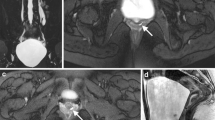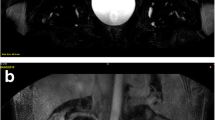Abstract.
The normal anatomy and many pathologies of the pediatric genitourinary system can be assessed with different imaging modalities. Most of them are based on the use of ionizing radiation and/or invasive techniques. The contribution of magnetic resonance imaging in this regard has opened new ways of approaching pathological conditions in this patient group. The addition of the newly developed rapid techniques has enhanced the superiority of MRI, and both morphological and functional evaluation of the genitourinary system can be achieved. There are different factors on which rely the optimization and the efficiency of magnetic resonance urography (MRU). Of importance is adequate patient immobilization and the use of optimal imaging sequences. The rapid technical development, including the advent of the post-processing respiratory navigator, allows acquisition of high-quality images independent of the patient's respiratory rate. In the future, it is expected that MRU, due to its non-use of ionizing radiation, will become the most important tool in the diagnostic work-up of genitourinary pathologies in infants and small children.
Similar content being viewed by others
Author information
Authors and Affiliations
Additional information
Received: 1 June 1999; Revision received: 9 August 1999; Accepted: 11 August 1999
Rights and permissions
About this article
Cite this article
Borthne, A., Pierre-Jerome, C., Nordshus, T. et al. MR urography in children: current status and future development. Eur Radiol 10, 503–511 (2000). https://doi.org/10.1007/s003300050085
Issue Date:
DOI: https://doi.org/10.1007/s003300050085




